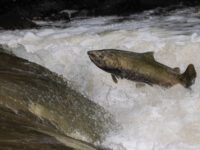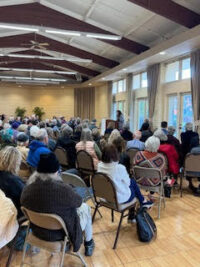The days of spending hours manicuring lawns are over. In fact, lawns themselves are over. Xeriscaping, which is landscaping with minimal if any water requirements, is now de rigueur.
Denver Water, which coined the term during the ‘70s droughts, laid out five key principles of xeriscaping. First and foremost is plant selection.
“Here in Sonoma, where we have a dry summer and wet winter Mediterranean climate, native plants will survive through the summer on little water,” said Sonoma Master Gardener Steven Hightower. “Some of the suitable xeriscapic plants for the Sonoma Valley are perennials, like lavender and rosemary; climbing vines like honeysuckle and wisteria and many varieties of succulents,” he said.
The efficient use of water is the second rule. Hightower explained that drip systems are best used to get water to the single plants and that sprinklers should only be used for densely planted areas of ground cover. Whatever the method of watering, each zone should have a separate valve that may be independently programmed. Another conservation technique is hydro-zoning, or grouping of plants by the amount of water they require.
Use mulch to reduce water evaporation and regulate soil temperature. Compost mulch assists plant growth by adding nitrogen and conserves water by improving soil structure. Other than chipped and shredded barks, gravel, stones and even shells may be used as mulch.
The hardest aspect of xeriscaping for most homeowners is replacing their existing lawn. That’s why some water agencies use money as an enticement. “The Cash for Grass Rebate program offered by the City of Sonoma and the Sonoma County Water Agency will offer residents 50 cents per square foot, up to $400, and $150 towards a drip watering system if they replace their turf with low water-use plants,” said Water Conservationist Specialist Carrie Pollard.
“Getting rid of all turf is always best, but those who think it’s not a yard without an expanse of grass should consider greatly reducing their lawn,” said Master Gardener Gaius Robinson. “If you must have at least a small patch, less water is wasted by giving it a good soaking every three to five days rather than watering it every day.”
Another option is the installation of a synthetic grass product. That slippery and nubby Astroturf that pro athletes cursed when it was introduced has been replaced with a nylon and propylene blend that feels almost silky. With this material, watering, mowing, fertilizing and gophers are bad memories. Pet waste clean-up is done with the usual tools and a splash of water from the hose. An antimicrobial product may be needed to eradicate algae, bacteria, fungi and mold.
However, some environmental groups point out drawbacks to fake turf, such as the fact that most brands are made from petroleum products.
Faux lawns from various sources are available from Bay Area Synthetic Grass, Inc. The cost of materials and labor depends on the size of the area to be covered, removal of the existing lawn and installation factors. The pricing of grass material alone for a 100- to 200-square-foot lot is $3,000 to $4,000.
“Think about designing your xeriscapes in non-conventional ways by mixing water-wise plants and non-plant materials,” said Robinson. “Visit your local nurseries, rock and mineral outlets and garden centers and allow your imagination to run free.”
Bay Area Synthetic Grass, www.bayareasyntheticgrass.com; 888.490.8570.
Cash for Grass Rebate Program,
www.sonomacity.org; 707.547.7968.
Sonoma Master Gardeners,
19722 8th St. Sonoma; 707.938.0727; http://groups.ucanr.org/sonomamg.
The new landscaping reality: Xeriscaping and fake lawns
More from What's HappeningMore posts in What's Happening »
- Chinook Salmon Spotted in Valley Creeks
- Lighted Tractor Parade Set for November 30 on Sonoma Plaza
- Free Thanksgiving Dinner, 3pm at the Veterans Building
- Creative Sonoma Announces #TeachTheArts Campaign to Boost Local Teaching Workforce
- The Living Legacy of Mac McQuown
- “Community Call to Action Town Hall” Draws Concerned Residents






